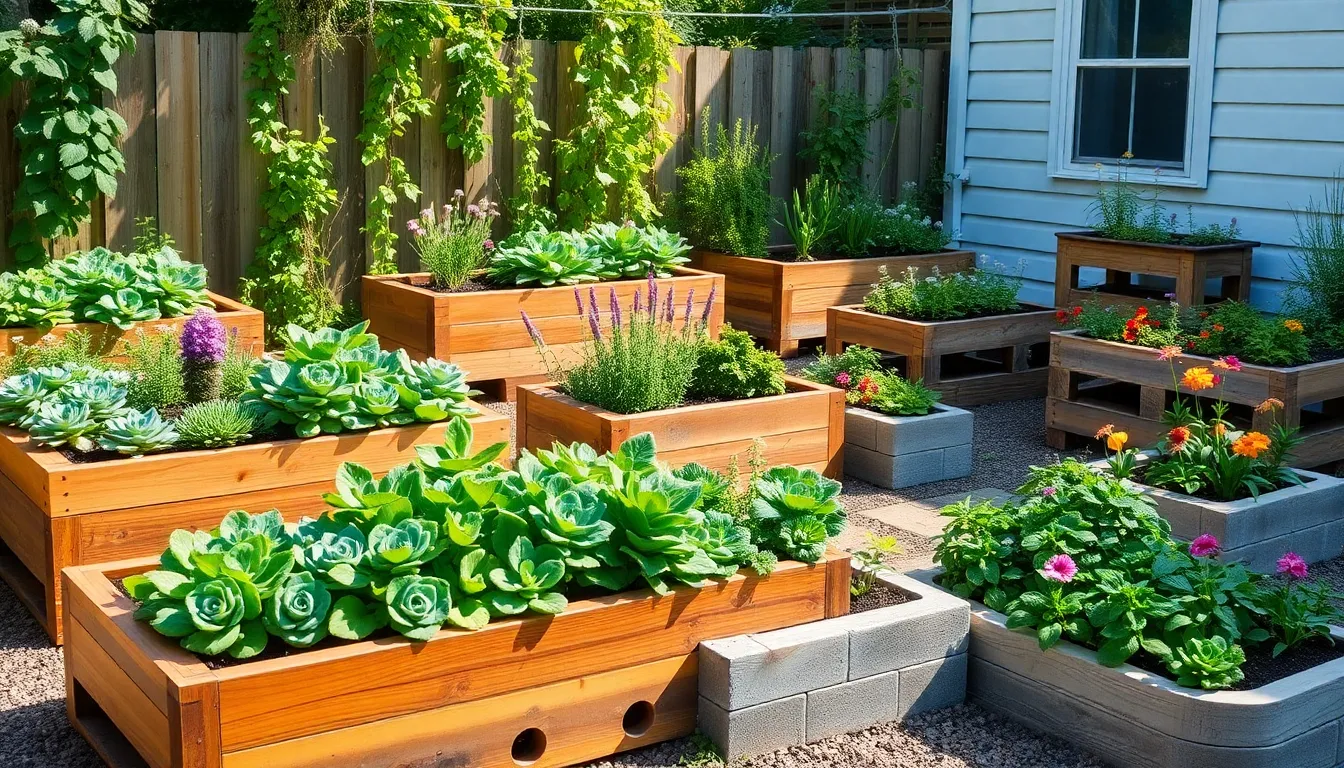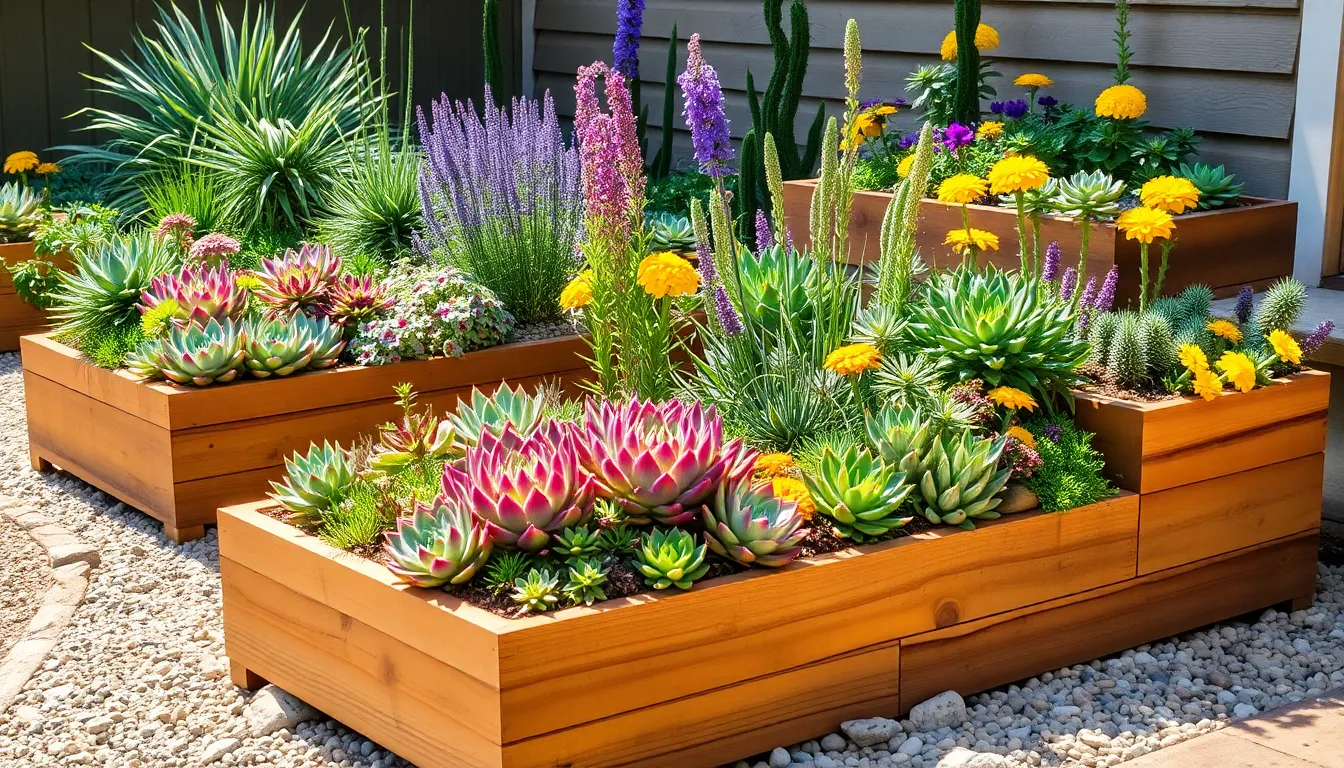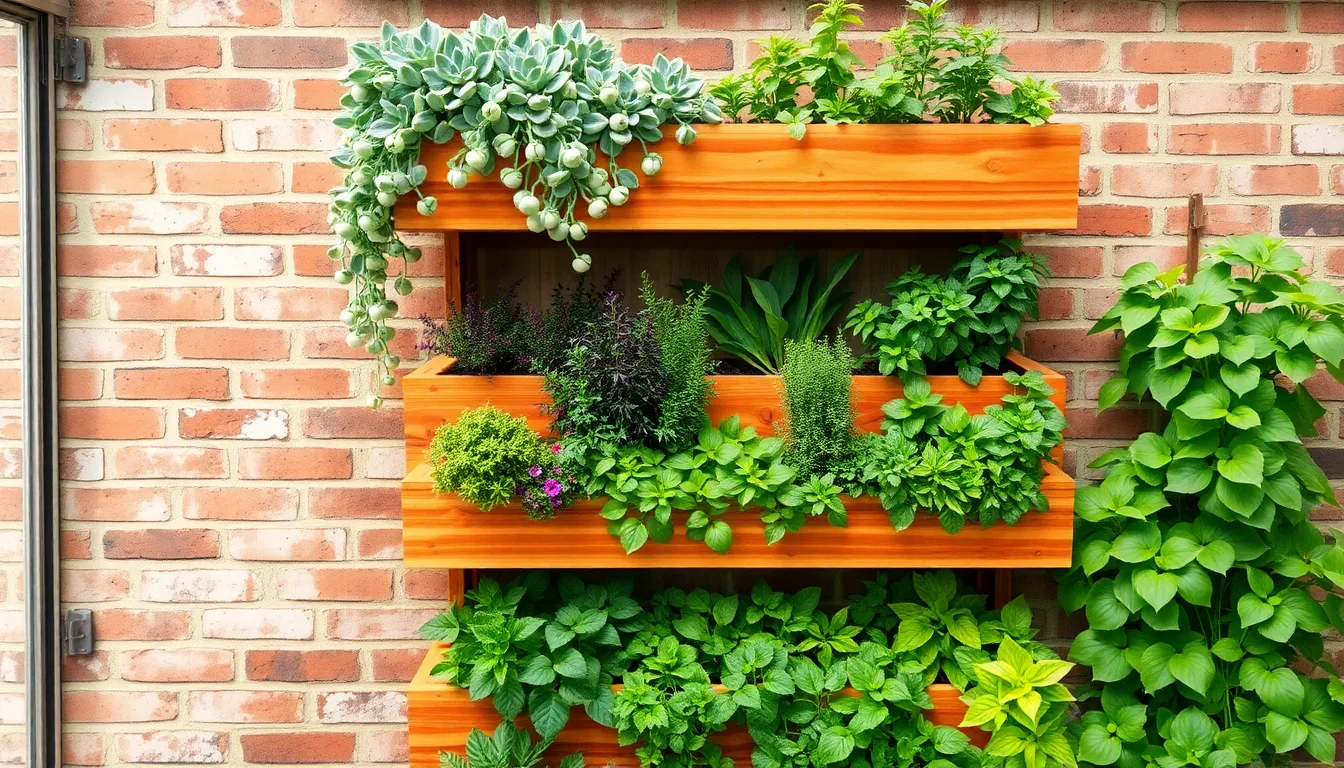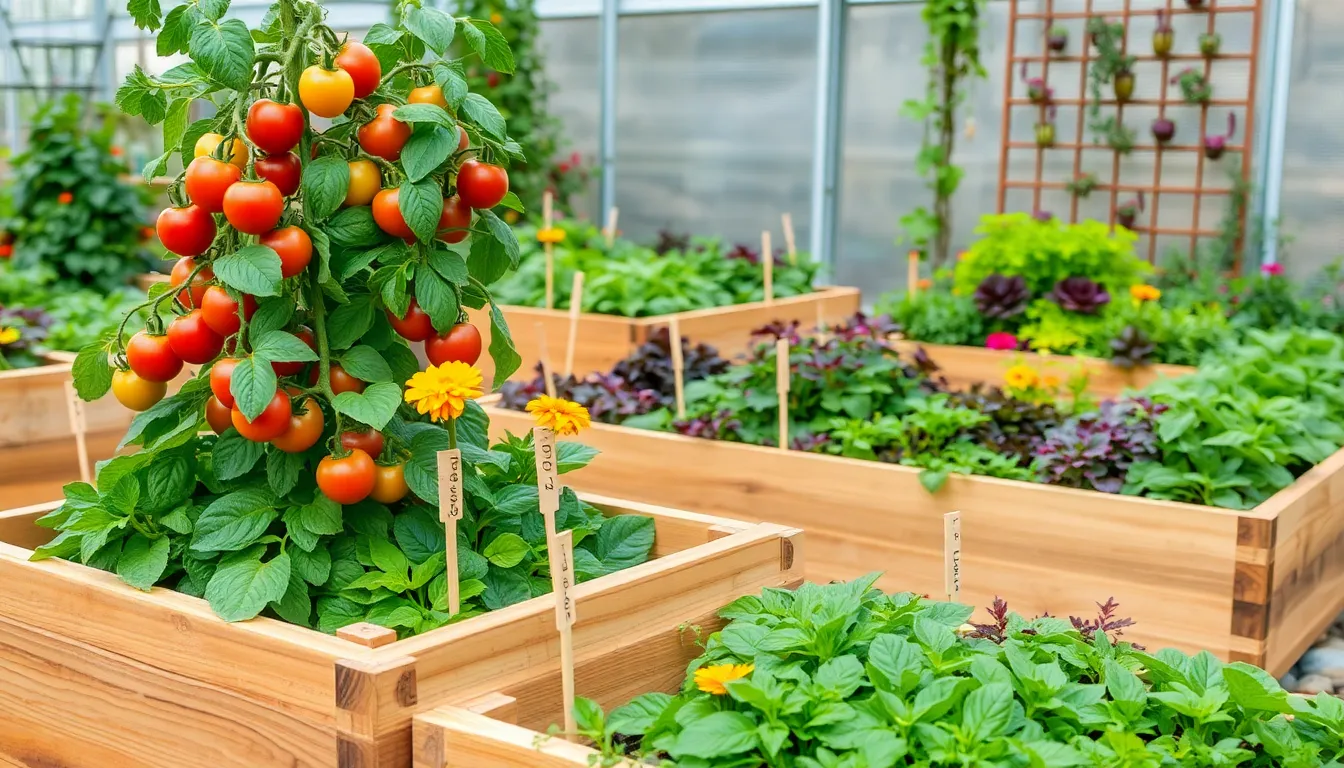Whether you’re just sowing the seeds of your gardening journey or have already cultivated a lush oasis, the allure of raised bed gardening is undeniable. It offers a practical and rewarding way to grow your green dreams, all while providing better control over soil quality and drainage.
Imagine transforming your backyard or even a small balcony into a thriving vegetable haven without breaking the bank. In our exploration of 14 budget-friendly raised bed garden plans, you’ll discover innovative ideas that fit any space and skill level, ensuring gardening remains both accessible and enjoyable.
From repurposing household items to utilizing easy-to-find materials, these plans are designed to inspire creativity while nurturing your budget. By the end of this article, you’ll be equipped with practical insights and step-by-step guidance to craft your own cost-effective raised bed, making your gardening goals well within reach.
Understanding Raised Bed Gardening Basics
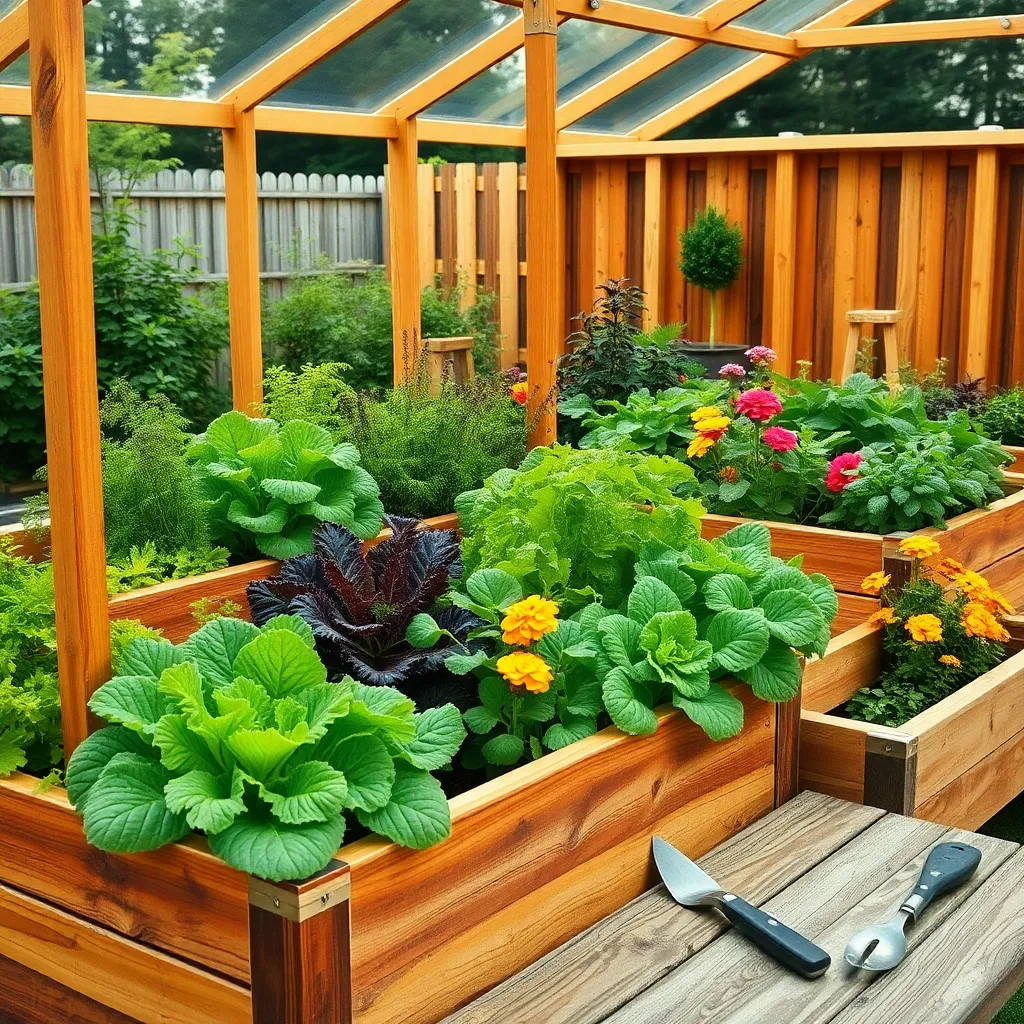
Raised bed gardening offers a flexible and efficient way to grow plants, especially in areas with poor soil quality. By elevating your garden, you gain better control over soil type, drainage, and weed management, making it a favorite among both beginner and experienced gardeners.
To get started, choose a location with at least six to eight hours of direct sunlight daily, as most vegetables thrive in bright conditions. Consider positioning your raised bed near a water source to simplify watering, especially during dry spells.
Select a soil mix that provides the right balance of nutrients and drainage; a popular choice is a blend of one-third compost, one-third peat moss or coconut coir, and one-third vermiculite or sand. This combination ensures your plants have access to nutrients while promoting excellent drainage, crucial for preventing root rot.
Watering is essential, especially in raised beds, as they can dry out faster than traditional gardens. Check soil moisture regularly, aiming to keep it consistently moist but not waterlogged; a general guideline is to water deeply once or twice a week, adjusting based on rainfall and temperature.
Advanced gardeners can experiment with companion planting, which involves growing complementary plants together to enhance growth and deter pests. For example, planting marigolds alongside tomatoes can help repel nematodes, while basil can improve the flavor of tomatoes.
Choosing Cost-Effective Materials
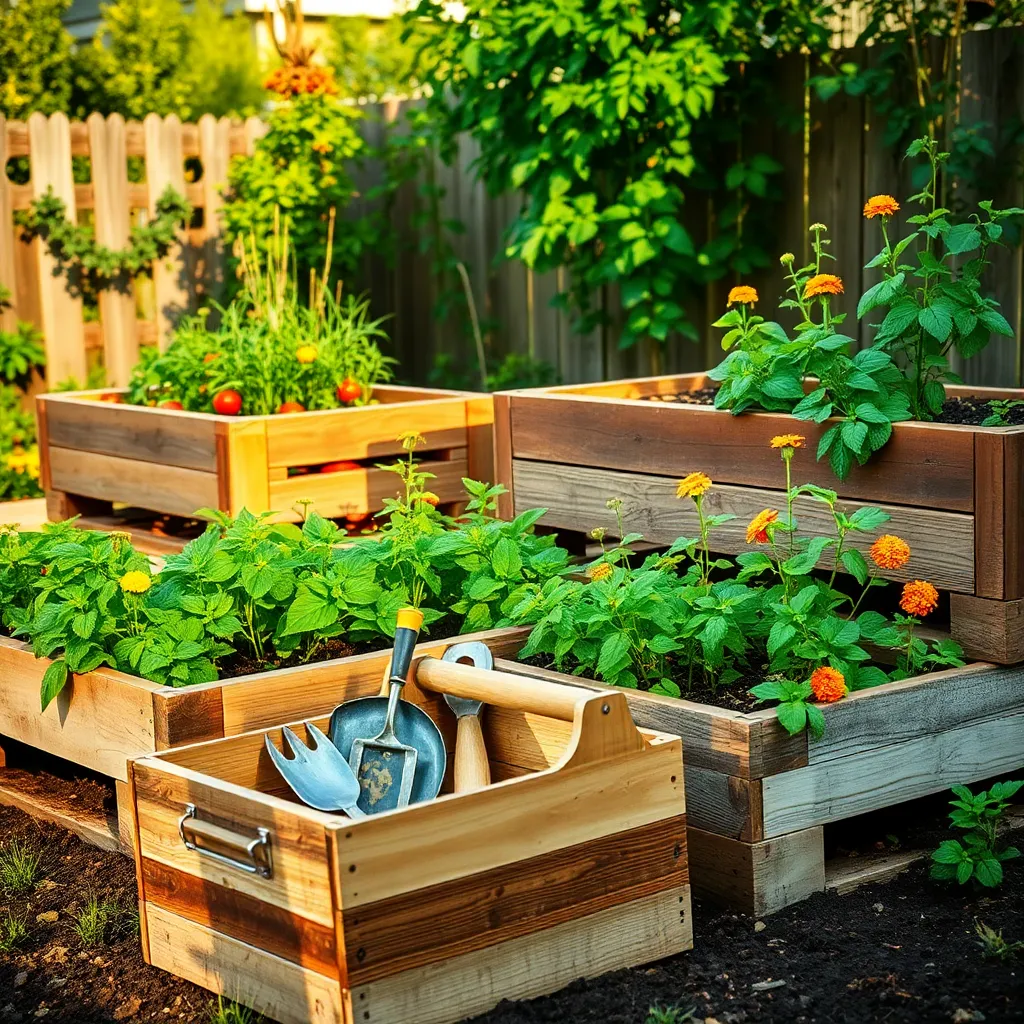
When selecting materials for your raised bed garden, consider using reclaimed wood or recycled bricks for an eco-friendly and budget-conscious choice. These materials are not only cost-effective but also add a rustic charm to your garden space.
Opting for untreated wood like cedar or redwood can ensure durability while keeping costs lower in the long run. These woods are naturally resistant to rot and pests, providing a sustainable option for your raised beds.
Another economical choice is using cinder blocks or concrete blocks, which are durable and allow for easy customization of bed shapes. These materials can withstand harsh weather conditions and are readily available at most hardware stores.
For gardeners looking to save even more, consider using straw bales as temporary raised beds. They are inexpensive, biodegradable, and can enrich your soil as they decompose over time, making them a dual-purpose solution.
Simple Wood Frame Construction
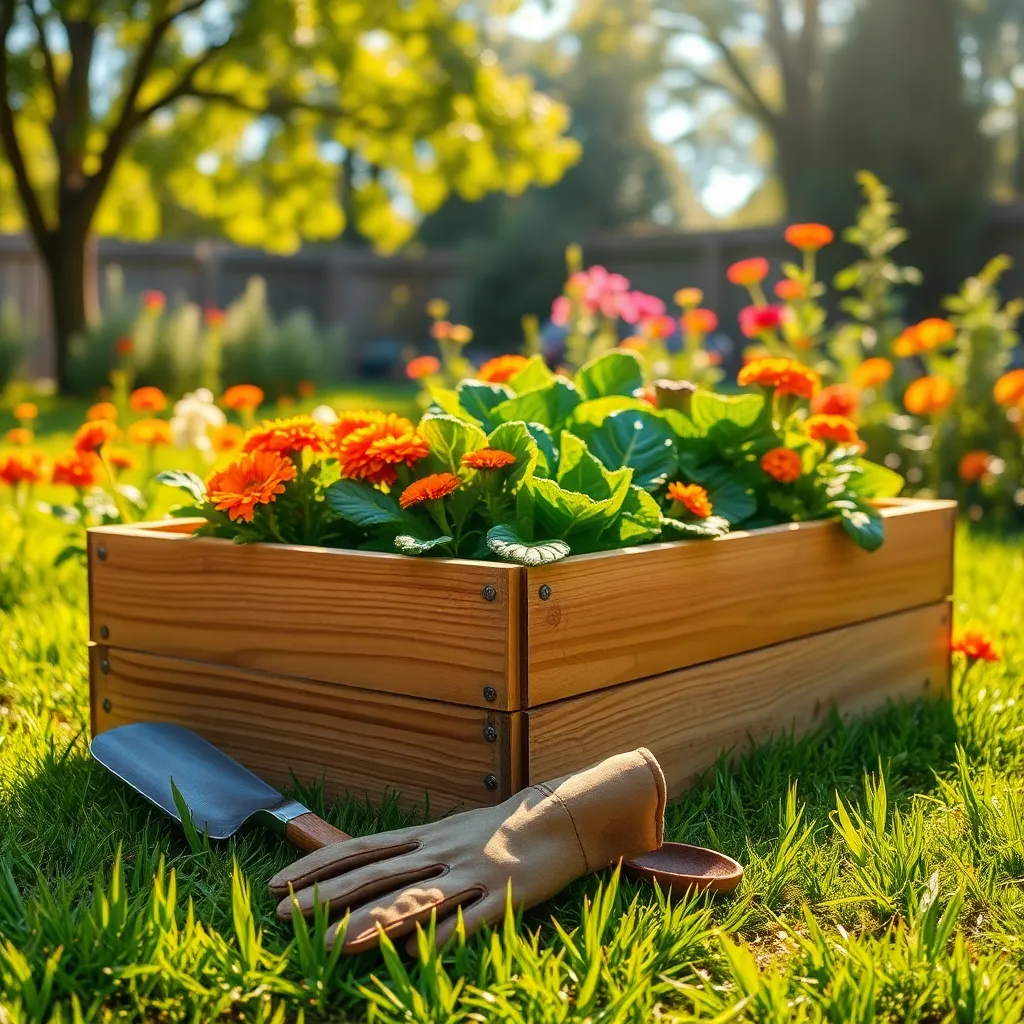
Building a simple wood frame for your raised bed is an excellent budget-friendly option. Start by selecting untreated wood, such as cedar or pine, which are both durable and resistant to rot.
Measure the area where you plan to place the raised bed to ensure an accurate fit. Cut the wood to the desired lengths using a saw, creating four pieces for the perimeter of your frame.
Assemble the frame by attaching the corners with galvanized screws, which will prevent rust and increase longevity. Use a power drill for this step to make the process quicker and ensure the screws are tightly secured.
Once constructed, position the frame on your prepared garden site. It’s crucial to level the bed by adjusting the soil beneath to ensure even water distribution and better plant growth.
For enhanced plant health, fill the frame with a rich mixture of topsoil, compost, and peat moss. This soil blend will provide essential nutrients and improve drainage, key components for thriving plants.
Water the soil thoroughly after filling the frame to help it settle and eliminate air pockets. Regular watering, especially in the initial weeks, will promote root establishment and robust plant development.
Affordable Metal Bed Alternatives
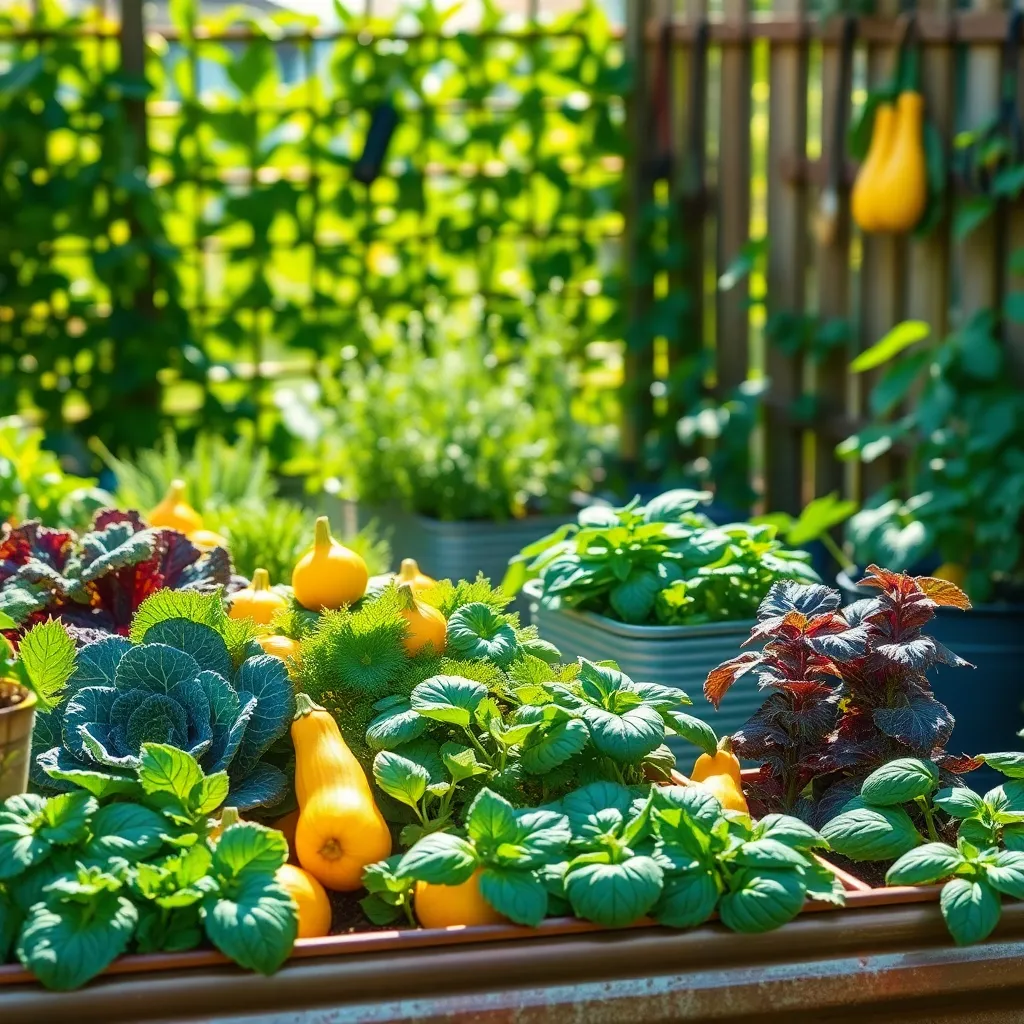
Metal beds can be quite expensive, but there are affordable alternatives that perform just as well. One option is to use corrugated metal roofing panels, which are durable and weather-resistant. Cut the panels to your desired size and support them with wooden or metal posts to create a sturdy frame. This option not only saves money but also adds a modern touch to your garden space.
Another cost-effective choice is to source recycled metal barrels for your raised beds. These barrels can be cut in half and used as deep planting containers, ideal for root vegetables like carrots and potatoes. Ensure the barrels have adequate drainage holes at the bottom to prevent waterlogging. With the right soil mix, these barrels can provide excellent growing conditions.
For gardeners seeking a more rustic look, consider using scrap metal sheets from salvage yards. These sheets can be bent and shaped to form unique and artistic raised beds while keeping costs low. Protect the metal from rust by applying a coat of rust-resistant paint suitable for outdoor use. This adds longevity to your beds while keeping maintenance minimal.
When using metal alternatives, it’s essential to consider the soil temperature, as metal can heat up quickly in the sun. To mitigate this, line the interior with a layer of landscape fabric or cardboard before adding your soil mix. This not only protects plant roots from overheating but also provides a barrier against pests and weeds. Experimenting with these affordable options can lead to a thriving and visually appealing garden space.
Repurposing Pallets for Garden Beds
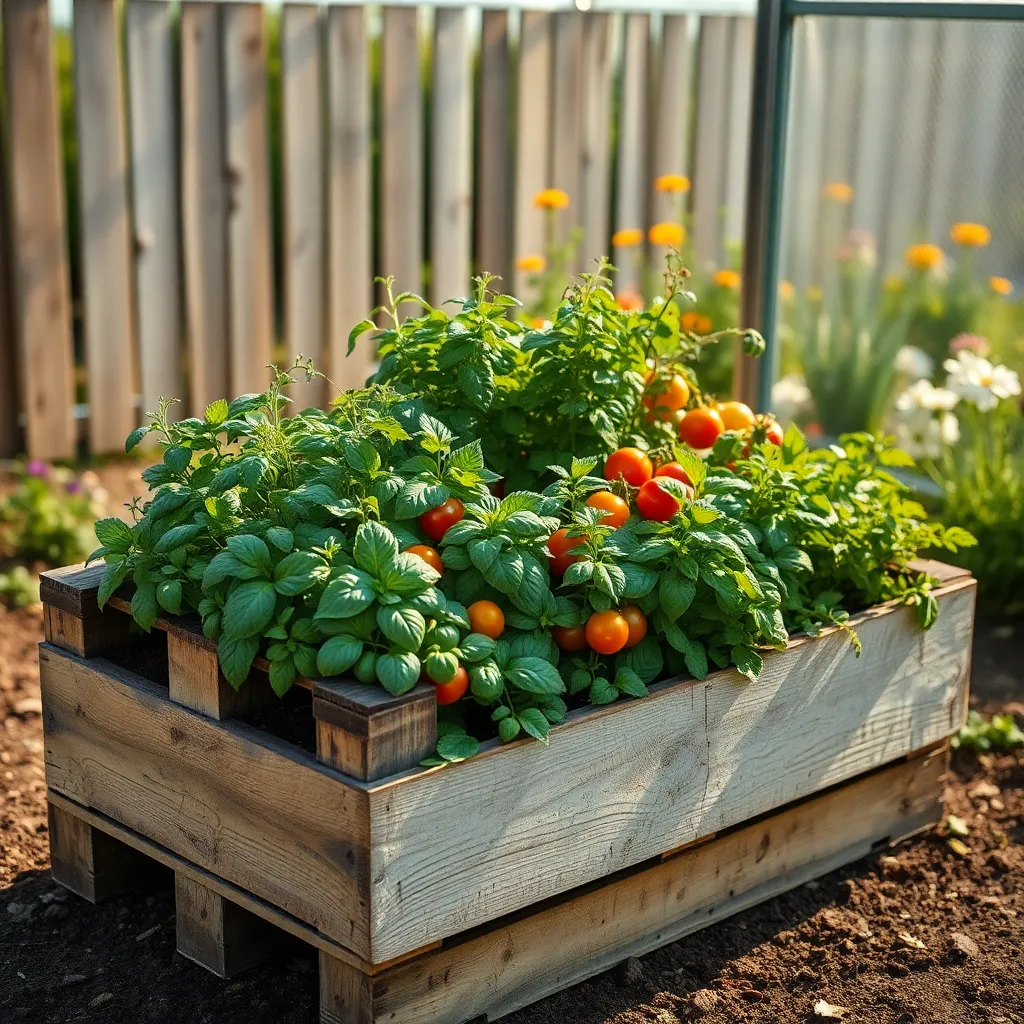
Repurposing pallets for garden beds is an eco-friendly and cost-effective way to create raised beds. Before you begin, ensure the pallets are heat-treated and free from toxic chemicals, which is often indicated by the “HT” stamp.
Once you have your pallets, you can easily disassemble them with a hammer and crowbar. Use the planks to build the sides of your raised bed, securing them with weather-resistant screws for durability.
Fill your new pallet garden bed with a mixture of quality topsoil, compost, and a little bit of sand to improve drainage. This soil combination ensures that your plants receive adequate nutrients while preventing root rot.
Regular watering is crucial, especially during dry spells, so aim to water your raised beds two to three times a week. To retain moisture, add a layer of mulch on top, which also helps in suppressing weeds.
DIY Concrete Block Designs
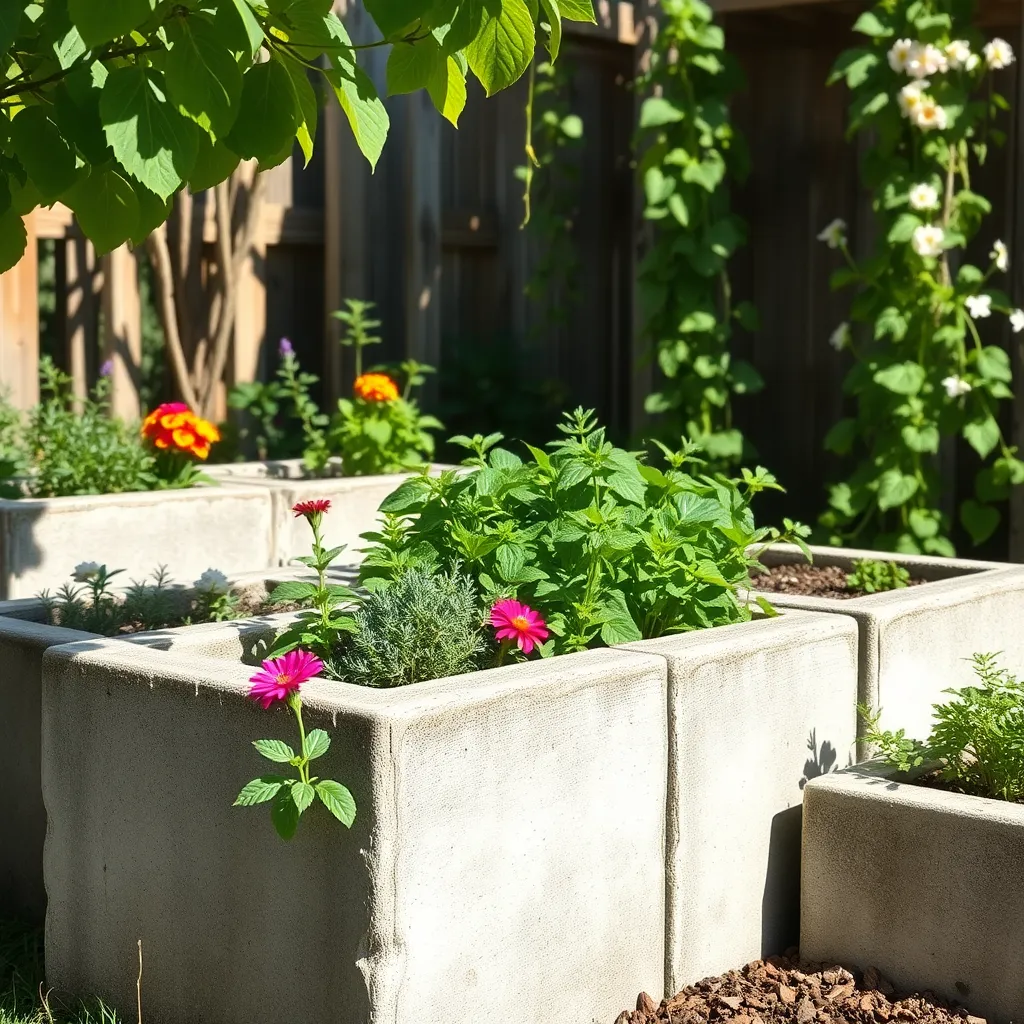
Concrete blocks are an affordable and durable option for creating raised garden beds that can withstand various weather conditions. They are readily available at most hardware stores, making them an accessible choice for gardeners on a budget.
When using concrete blocks, start by selecting a sunny spot in your garden, as most vegetables and herbs require at least six hours of sunlight daily. Arrange the blocks in a rectangular or square shape, filling the interior with a quality soil mix that is rich in organic matter.
Consider adding compost and aged manure to ensure your soil has plenty of nutrients to support robust plant growth. For beginners, incorporating a mix of 60% topsoil, 30% compost, and 10% potting soil can create a fertile environment for a wide range of plants.
To ensure proper drainage, especially in areas with heavy rainfall, raise the blocks slightly off the ground using small wooden planks or bricks. This will help prevent waterlogging, which can lead to root rot and other plant diseases.
Advanced gardeners can maximize space efficiency by planting shallow-rooted herbs or flowers in the holes of the concrete blocks. These small pockets are perfect for herbs like thyme or flowers like marigolds, which can help repel pests naturally.
Using Straw Bales Creatively
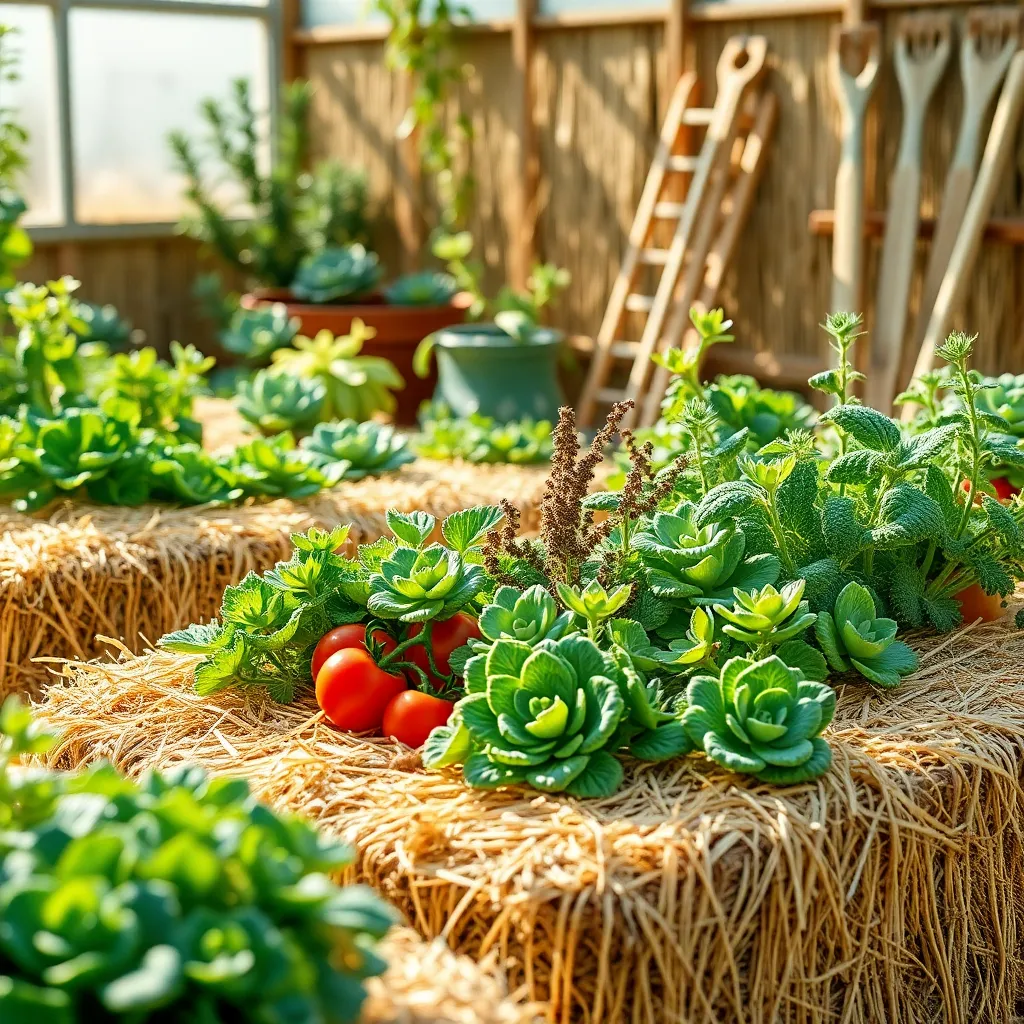
Straw bales can be a creative and affordable solution for raised bed gardening, offering both structure and nutrients. To start, place your straw bales in a sunny spot, as most vegetables and flowers thrive in positions with at least six to eight hours of sunlight daily.
Before planting, condition the bales to prepare them for growing. Begin by soaking them thoroughly with water and adding a high-nitrogen fertilizer for about ten days to begin the decomposition process, which will enrich the planting medium.
After conditioning, insert seedlings or seeds directly into the bales, filling in gaps with a quality potting mix. Straw bales retain moisture well, so you’ll need to water them more frequently in the initial stages, especially during hot, dry spells.
For beginners, try growing easy vegetables like tomatoes or cucumbers, which adapt well to straw bales. Advanced gardeners might experiment with nutrient-loving plants such as melons or squash, taking advantage of the bales’ rich decomposing matter.
Monitor your straw bale garden regularly for pests and diseases, as the moist environment can attract unwanted guests. Encourage beneficial insects by planting companion herbs such as basil or marigold, which can help deter pests naturally.
Vertical Raised Bed Solutions
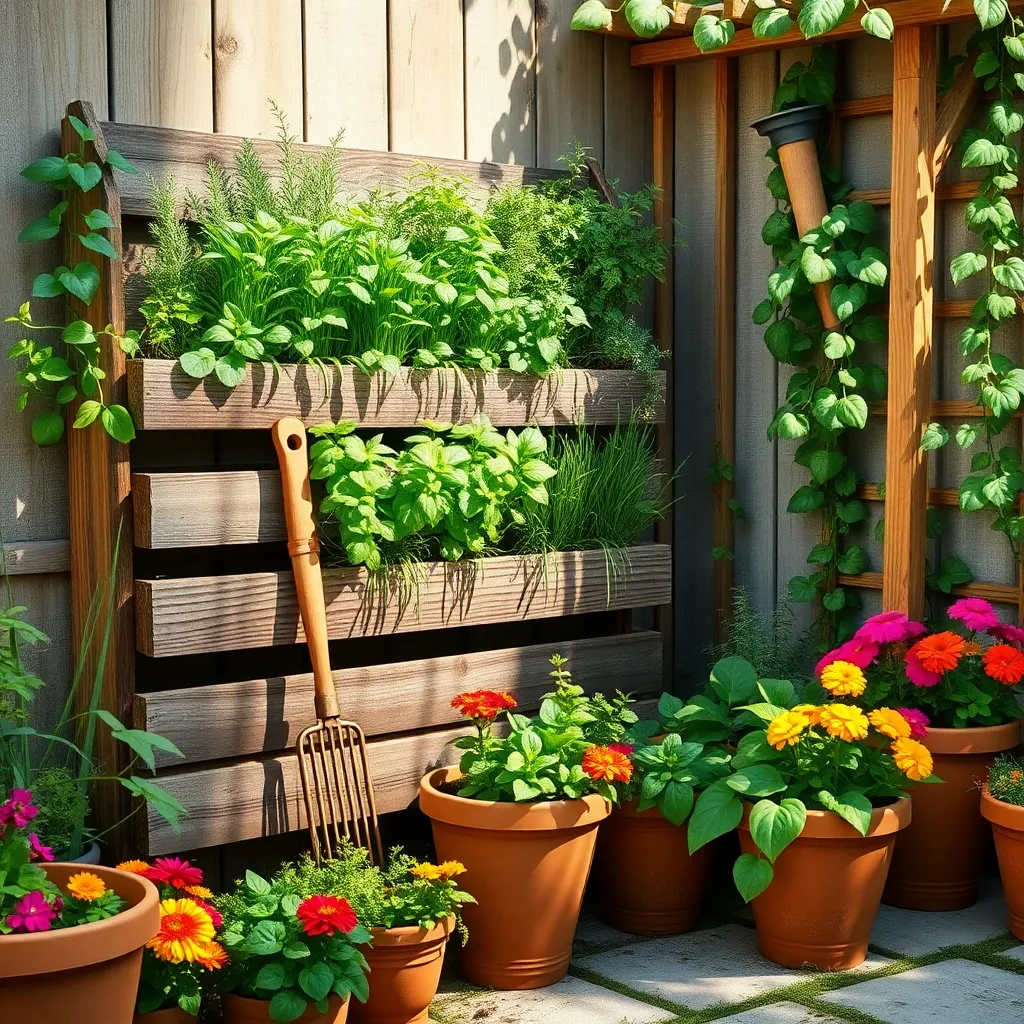
Vertical raised beds offer an innovative way to maximize space, making them ideal for small gardens or urban environments. By growing plants vertically, you can create a lush, productive garden without requiring a large footprint, which is perfect for balconies or patios.
Consider using materials such as wooden pallets or PVC pipes to construct your vertical raised beds. These materials are often readily available and inexpensive, allowing you to create a budget-friendly garden that can host a variety of plants.
For beginners, start with easy-to-grow plants like strawberries, herbs, or leafy greens, which thrive in vertical settings. Ensure your plants receive adequate sunlight by placing your vertical garden in a spot that gets at least six hours of sunlight daily.
Advanced gardeners can experiment with intricate designs that incorporate drip irrigation systems for efficient watering. These systems help maintain consistent soil moisture, which is crucial for the health of your plants, especially in vertical arrangements where water can drain quickly.
When it comes to soil, use a lightweight potting mix to prevent compaction and ensure proper drainage. Incorporate compost or well-rotted manure into the soil to provide your plants with essential nutrients for robust growth.
Regularly check for pests and diseases, as the compact nature of vertical gardens can sometimes lead to increased susceptibility. Employ natural pest control methods, such as introducing beneficial insects or using organic sprays, to keep your plants healthy and thriving.
Integrating Companion Planting Techniques
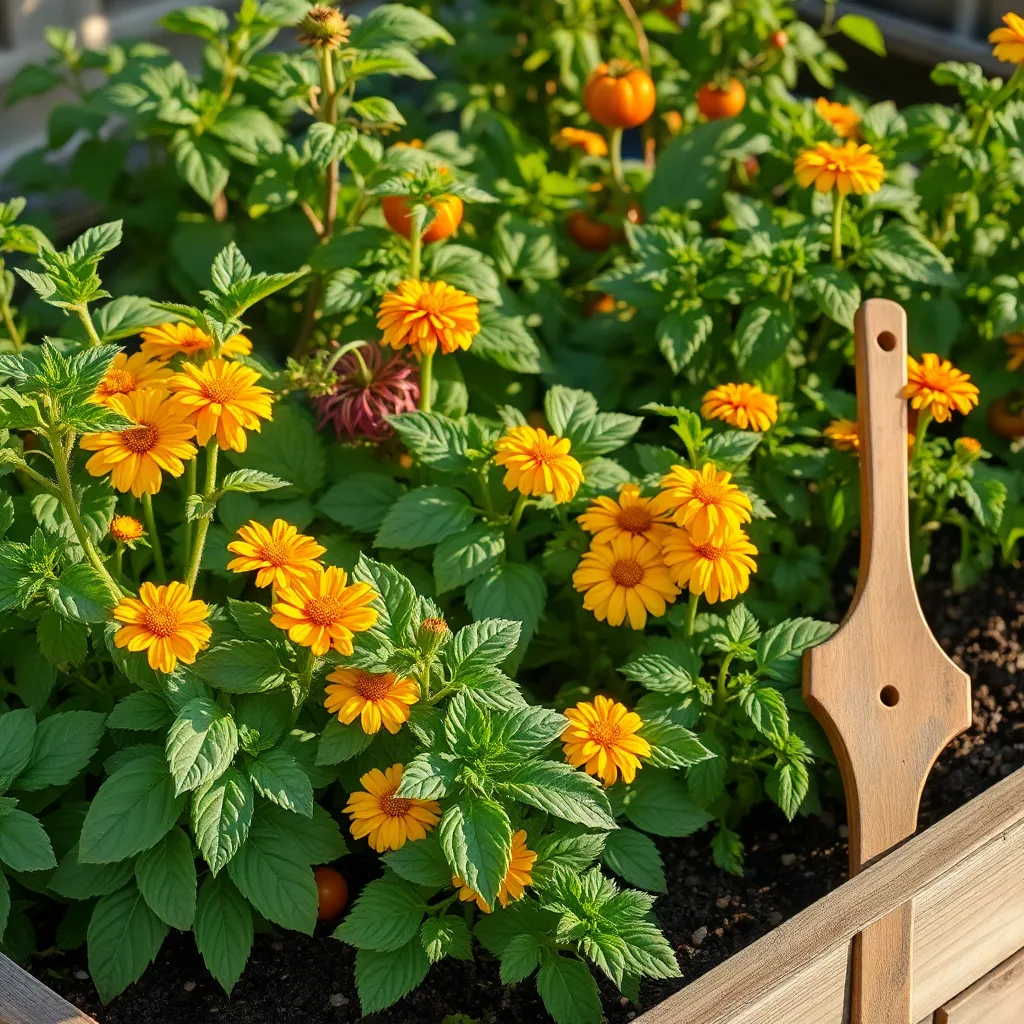
Companion planting is a strategic practice that can enhance the productivity of your raised bed garden. By placing compatible plants together, you can naturally deter pests and improve plant health, leading to more bountiful harvests.
Consider planting tomatoes alongside basil and marigolds for a synergistic effect. While basil enhances the flavor of tomatoes, marigolds help repel nematodes and other pests, making this trio a powerful combination.
For gardeners keen on maximizing space and yields, planting carrots and onions together can be beneficial. Carrots’ deep roots complement the shallow root system of onions, allowing both to thrive without competing for resources.
To maintain optimal growing conditions, ensure your raised beds have well-draining soil rich in organic matter. Water your plants in the morning to reduce evaporation, and apply a layer of mulch to retain moisture and suppress weeds.
For a more advanced approach, try interplanting fast-growing radishes with slower-growing crops like lettuce. This method not only saves time but also improves soil structure as the radishes are harvested, making room for the lettuce to expand.
Maximizing Space with Tiered Beds
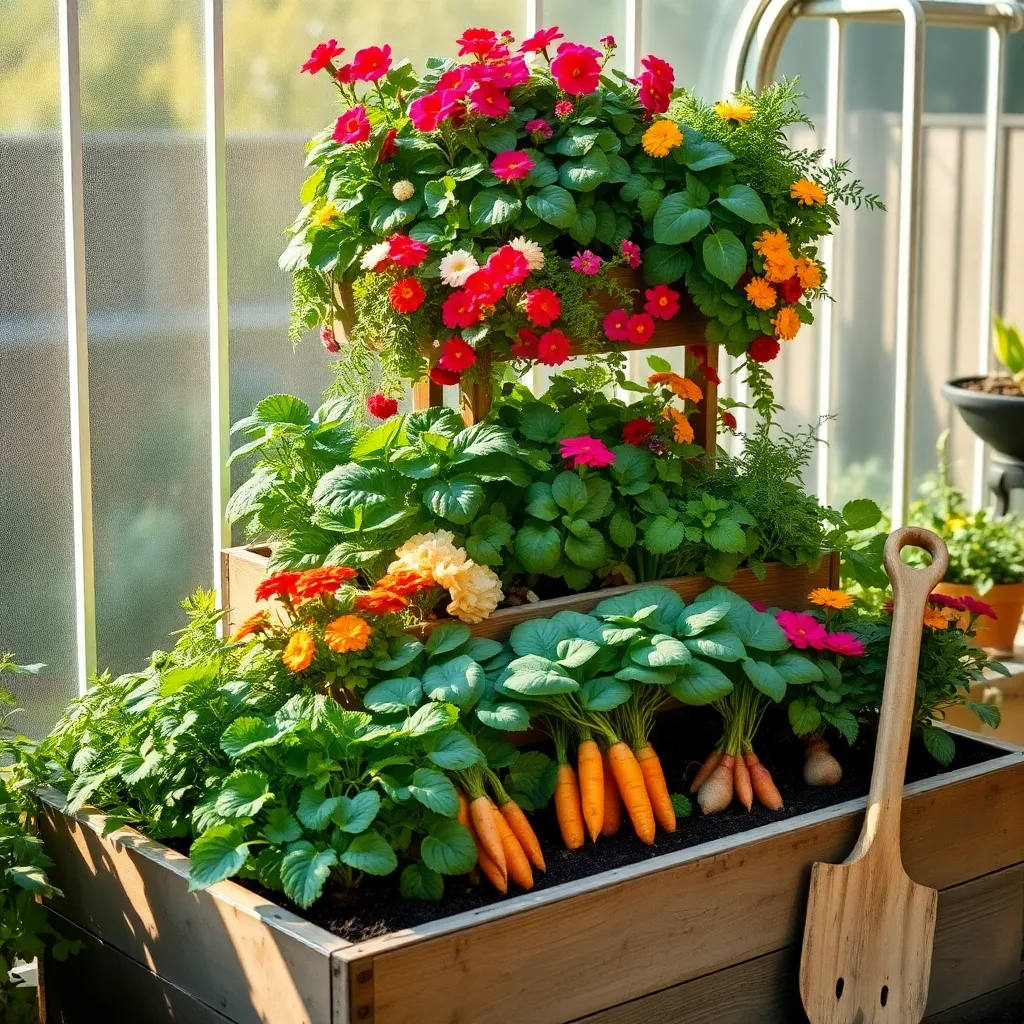
Tiered beds are an excellent way to maximize growing space in a small garden, allowing you to cultivate a variety of plants vertically. By stacking beds in a tiered fashion, you can create a visually appealing garden that optimizes sunlight exposure for each level.
To construct a tiered bed, start with a sturdy base made from durable materials like cedar or recycled composite wood. Ensure each tier is deep enough to support the root systems of the plants you intend to grow; generally, 6-12 inches is ideal for most vegetables and herbs.
Consider planting taller plants such as tomatoes or pole beans on the top tier, where they will receive the most sunlight and not shade the plants below. Medium-height plants like peppers or bush beans can be placed in the middle tier, while low-growing herbs or leafy greens thrive in the bottom tier.
Watering can be more efficient in a tiered garden if you set up a drip irrigation system to ensure each level receives adequate moisture. Use a quality potting mix enriched with compost to provide nutrients and promote healthy growth across all tiers, maintaining consistent soil moisture by mulching around plants.
Budget-Friendly Soil Mix Options
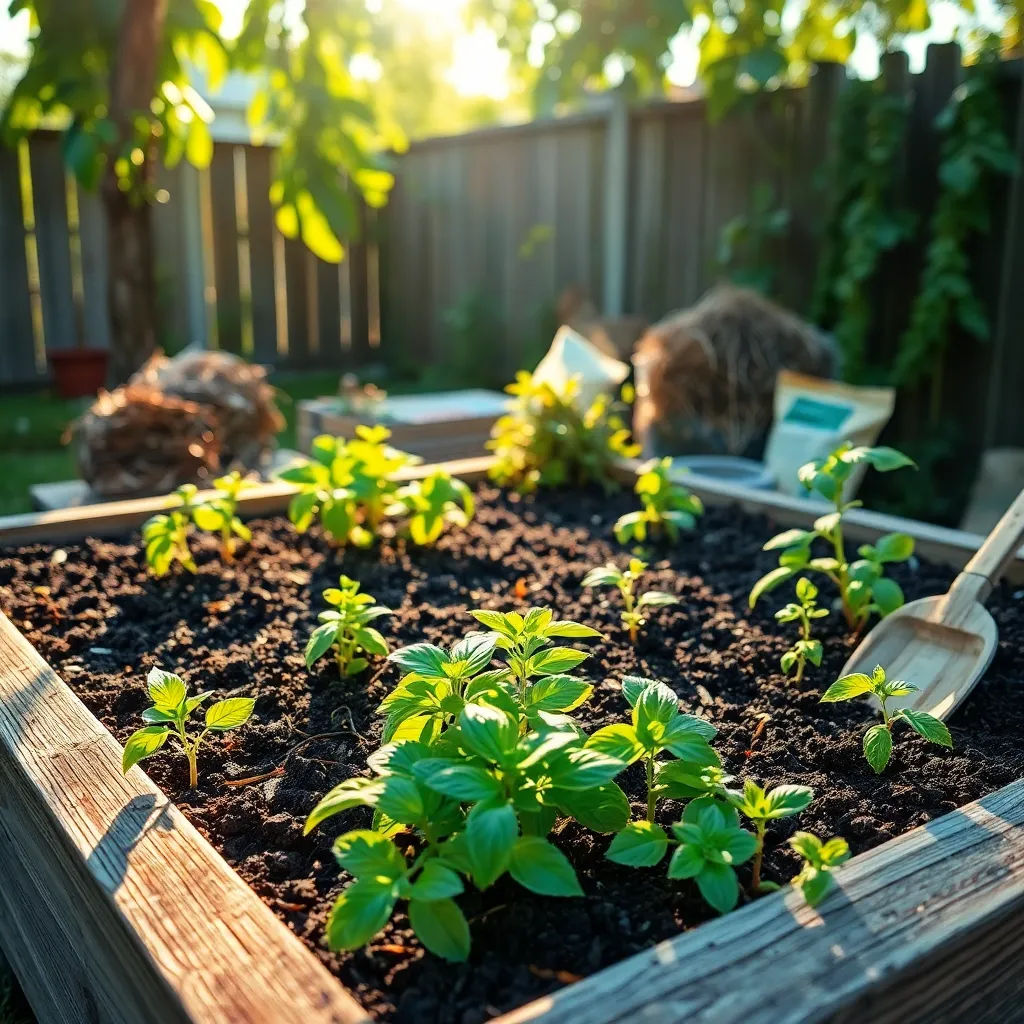
Creating a budget-friendly soil mix for your raised bed doesn’t have to be complicated. Start with a basic blend of equal parts topsoil, compost, and coarse sand to ensure good drainage and nutrient availability.
For beginners, this simple recipe provides a well-balanced growing medium suitable for most vegetables and herbs. Topsoil provides the essential structure, compost enriches the soil with organic matter, and sand ensures proper drainage.
To enhance this basic mix, consider adding perlite or vermiculite to improve aeration, especially if you plan to grow root vegetables like carrots or beets. Both materials are relatively inexpensive and can be found at most garden centers, offering a cost-effective solution to soil compaction issues.
For those looking to further enrich their soil, incorporating aged manure or worm castings can provide an additional nutrient boost. These organic amendments are particularly beneficial for heavy feeders like tomatoes and peppers, helping to sustain vigorous plant growth throughout the season.
Easy Drainage and Irrigation Tips
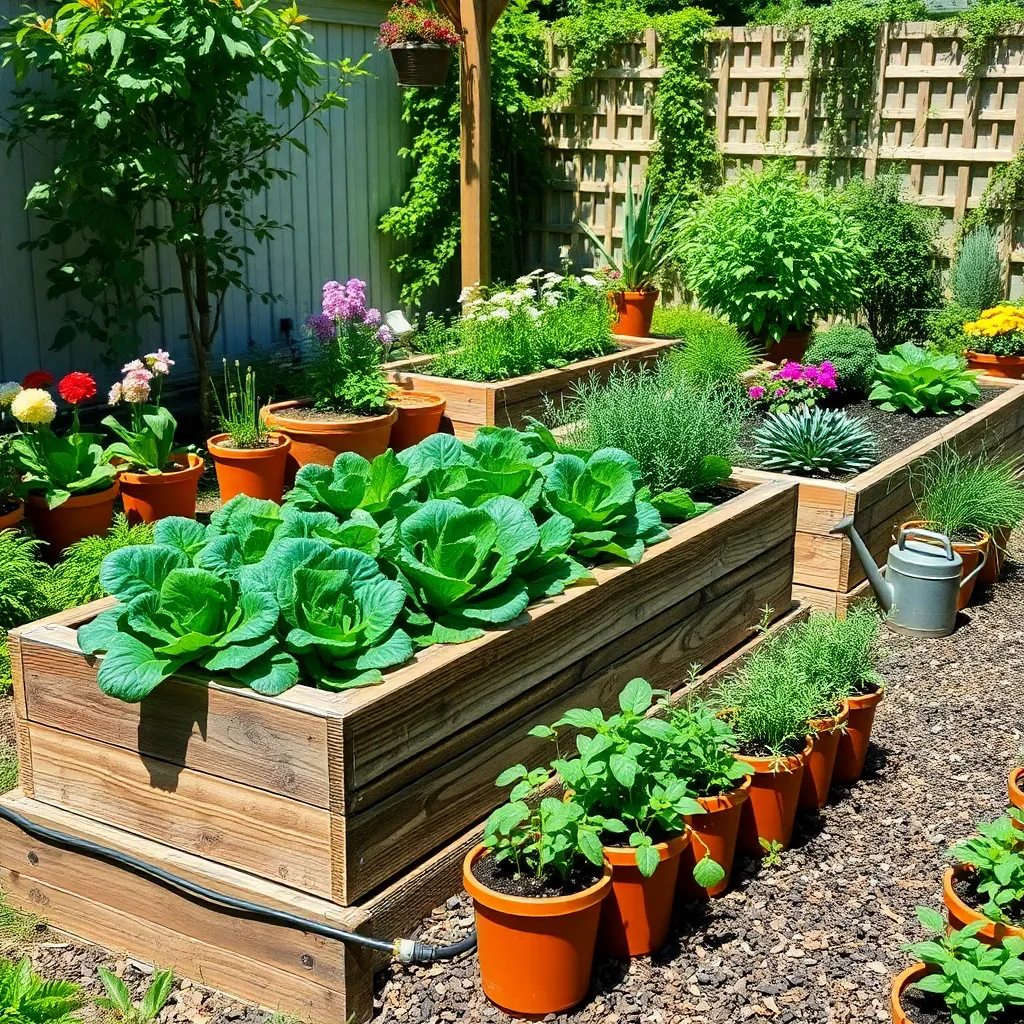
Ensuring proper drainage in raised bed gardens is crucial for healthy plant growth. **Start by layering coarse materials like gravel or small stones** at the bottom of your raised beds to facilitate water flow and prevent root rot.
Another effective technique is to mix organic matter into your soil to improve drainage. Adding **compost or well-aged manure** not only enhances soil structure but also provides essential nutrients for plants.
For irrigation, consider installing a simple drip system that delivers water directly to the roots. **Drip irrigation systems are highly efficient**, conserving water and ensuring your plants receive consistent moisture.
Hand watering is a viable option for smaller raised beds, but make sure to water deeply and less frequently. This encourages plants to develop **deep, resilient root systems**, which are vital during dry spells.
Advanced gardeners might explore installing a rainwater collection system to reduce water usage and promote sustainability. **Collected rainwater is naturally soft and free of chemicals,** making it ideal for nurturing your garden organically.
Seasonal Maintenance on a Budget
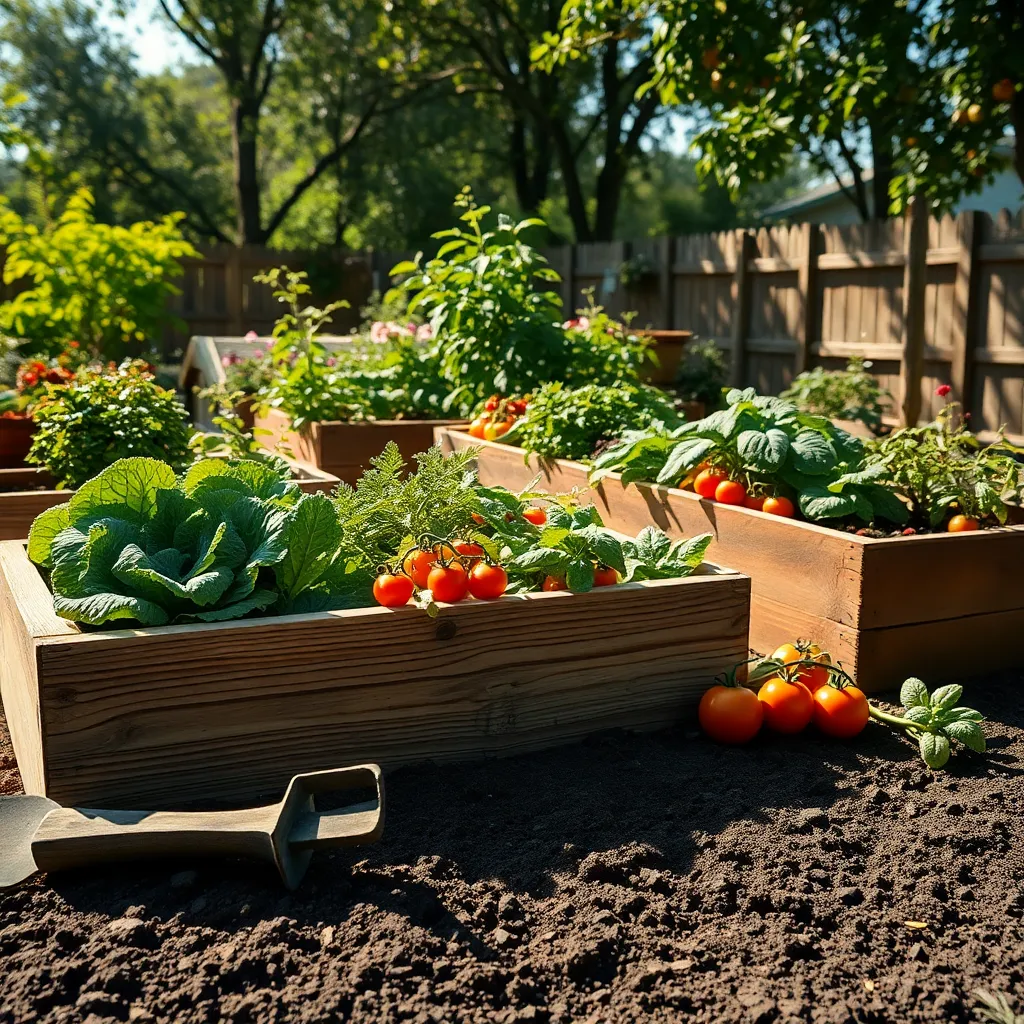
Maintaining your raised bed garden throughout the seasons doesn’t have to be expensive. One of the simplest ways to keep costs down is by using organic mulch, such as shredded leaves or grass clippings, to conserve moisture and suppress weeds. These materials are often free and can enrich your soil as they decompose.
Consider planting cover crops like clover or vetch in the fall, which can be tilled into the soil in spring to boost fertility at no cost. This not only improves soil structure but also adds essential nutrients, promoting healthier plant growth. For those with a bit more experience, rotating crops between seasons can prevent soil nutrient depletion and reduce pest build-up.
To efficiently manage watering, install a simple drip irrigation system using recycled materials like old hoses or plastic bottles. These systems deliver water directly to the roots, conserving water and ensuring plants receive consistent moisture. Additionally, monitoring weather patterns can help you adjust watering schedules accordingly, maximizing efficiency and minimizing waste.
Keeping your raised bed garden tools in good condition is vital for budget-friendly maintenance. Regularly clean and sharpen tools to extend their lifespan and improve their effectiveness. Storing tools properly to prevent rust and wear can save you money in the long run by reducing the need for replacements.
Extending Growing Seasons Economically
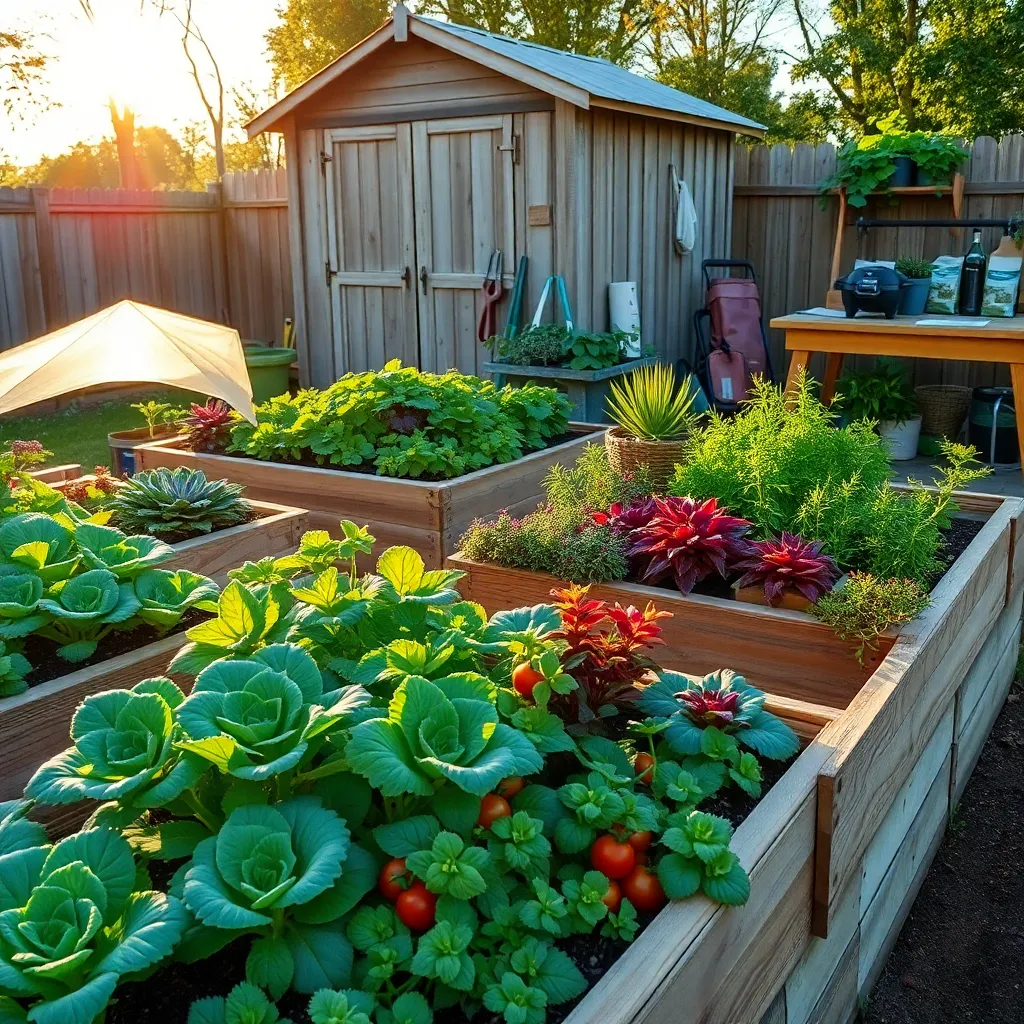
One of the simplest ways to extend your growing season without breaking the bank is to leverage the power of row covers. These lightweight fabrics can protect your crops from frost and harsh weather, allowing you to grow longer into the cooler months.
Another affordable technique is to use cold frames, which can be built using salvaged windows and wooden frames. Cold frames act like mini-greenhouses, capturing solar energy to warm the soil and air, keeping your plants thriving even when temperatures drop.
For those with limited space, consider planting in containers, which can be easily moved indoors or into sheltered areas during unexpected cold snaps. This flexibility ensures your plants remain in optimal conditions, extending their productive phase and reducing the risk of damage.
Incorporating mulch is another cost-effective strategy to insulate the soil and maintain its temperature. By adding a layer of straw or leaf mold around your plants, you can help retain soil warmth and moisture, encouraging continued growth even as the weather cools.
Conclusion: Growing Success with These Plants
In navigating the intricate landscape of relationships, the “14 Budget-Friendly Raised Bed Garden Plans” serves as a metaphor for nurturing growth. By exploring these plans, you’ve uncovered essential relationship concepts such as communication, trust, adaptability, shared goals, and resourcefulness. Each plan reflects a unique approach to fostering a thriving partnership, emphasizing the importance of mutual support, creativity, and the cultivation of shared experiences.
As an actionable next step, why not choose one of these concepts to focus on with your partner this week? Whether it’s committing to open dialogue or embarking on a new project together, small steps can lead to significant growth.
I encourage you to save this article as a valuable resource for your relationship toolkit. Bookmark it now to revisit these insights whenever you need a reminder of the foundational elements that sustain healthy relationships.
Looking ahead, remember that relationships, like gardens, require ongoing care and attention. By applying these principles, you set the stage for lasting success and deeper connections. Armed with this knowledge, you’re empowered to build a flourishing relationship that stands the test of time.

